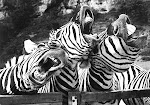_
My baseball database for the full 2009 season is finally done, and in a while I will be posting all kinds of charts and summaries that will enable anyone with iron discipline and a little money to make a long-term profit at sports betting.
Pity the baseball season is all but dead and gone for 2009, you might think.
But in fact the basic principles that I suspected might apply to baseball and for which I now have a season's worth of evidence can also be seen in basketball, hockey and pro-football results.
College football, with its crazy odds and its plethora of totally unpredictable betting options, is a sport I have decided to save for another lifetime and will probably keep right on ignoring!
I want to backtrack to what got me started on all this: a friend's excited prediction that the high win rates claimed by professional sports "cappers" offered a positive expectation that had to be a sitting duck for target betting.
My immediate response was that more wins than losses sounds like a gambler's dream. But as long as wins routinely pay substantially less than even money, what looks like positive expectation might turn out to be negative after all.
Months later, with 2,485 baseball games keyed in to my laptop, along with odds, money lines, run lines, totals and all manner of other data that I will probably never need, I can safely say that I was right to "diss" my friend's exciting new investment plan.
Between April 5 and October 4, favorites won almost three games out of five, leaving underdogs out in the cold far more often than not.
But 2,305 $100 flat bets on favorites would have resulted in a season LOSS of $8,580 or 3.72% of total action.
That's because favorites paid, on average, what money lines would show as -151, or a shade over 66 cents on the dollar.
Underdogs, on the other hand, paid more than TWICE that amount ($1.35 to $1), wiping out the disadvantage that logic might suggest was insurmountable, and ending the 2009 season with a profit of $1,750 or +0.8%.
Now, I'm not suggesting that anyone would be up for a happy dance after winning just a few pennies on thousands of bets spread over six months of daily visits to the sports book.
But what we are left with here is a candidate for target betting which does not require endless hours of play in a smoke-filled casino, rubbing elbows with suicidal fools and battling the vicissitudes of cards and dice!
As the database was growing, I "played" bets as if they were in chronological order so that the outcome of a given game would determine the value of the next bet.
Statistically, there was nothing wrong with this approach.
But in a real sports book setting, you obviously can't do what I was doing, unless you limited wagers to a handful a day and adopted a revolving door approach, waiting for a 10:00am game to end before deciding what to bet at 1:00pm, then 4:05pm and 7:30pm, or whatever.
My early suggestion to my friend "Pete" was that he split his betting budget (a large one, as it turned out) into multiple lines or series, so that he could place his bets in a single block once a day.
He would then use the result of Monday's first bet to set the value of the first bet on Tuesday, the second result to determine next day's second bet, and so on, running as many lines as he could afford.
Each line would independently unfold according to a modified version of the standard target betting rules, adjusted to reflect the difference between even-money paybacks on winners and returns that average better than 1.25:1 every time.
Against table games with a persistent negative expectation, for example, target betting needs as wide a spread as possible, often making it necessary to suspend play in mid-recovery because the table limit (the "green ceiling") has vetoed the next bet.
Sports books have limits too, but they are rendered meaningless by the fact that there's always time to split a bet up into fractions to make it palatable to all the books in town (or on the Net or wherever!).
We have seen from the 2009 baseball season that a win rate of almost 60% won't make favorites profitable over time, while a WR of less than 42% for underdogs is a moneymaker because of paybacks averaging 1.35 to 1.
What I am working on now is discovering a range of "dog odds" that eliminates the need to cover every game on the schedule on a given day.
But what I am most anxious to blow to pieces is every subjective element in the bet selection process.
I believe now more than ever that "the numbers" provide all the guidance we need to make steady money betting on sports.
Forget "cappers," forget team loyalty, even knowledge, experience and sound judgment.
And as mechanical or bloodless as that may sound, my guess is that winning steadily is a more than acceptable substitute for reliance on hunches and other emotional methods of bet selection.
Preliminary examination of the baseball data confirms with thousands of bets what's already present in a few dozen basketball results, and hundreds from the current NFL and NHL seasons.
It all comes down to the simple truth that with up to 90% of all sports bets going on favorites, in order for the bookies to win, underdogs must win too.
More about this later...
An important reminder: The only person likely to make money out of this blog is you, Dear Reader. There's nothing to buy, ever, and your soul is safe (from me, at least). Test my ideas and use them or don't. It's up to you.
_
Subscribe to:
Post Comments (Atom)


No comments:
Post a Comment